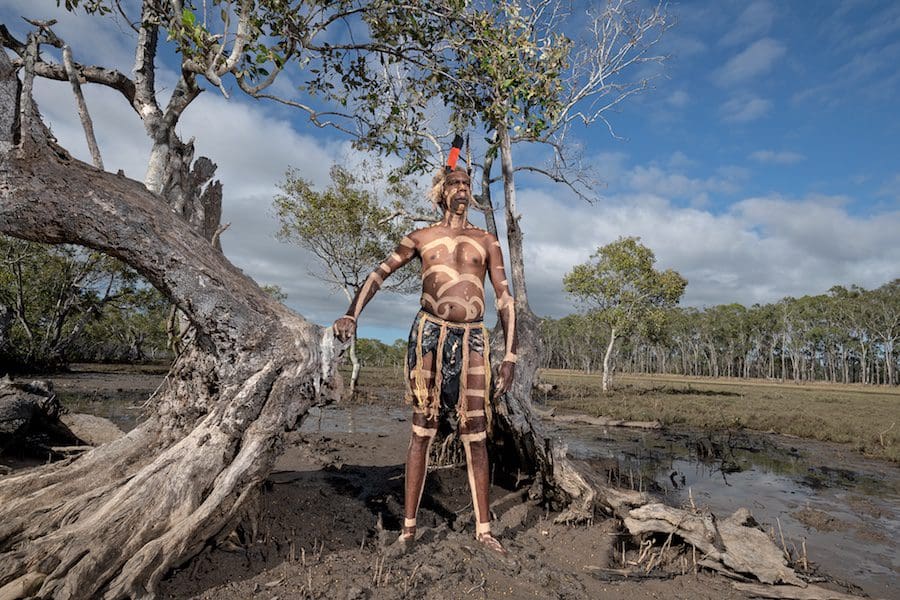
Piercing the veil
A new exhibition at Buxton Contemporary finds a rich complexity in the shadowy terrain between life and death.

Fiona Foley, The Magna Carta Tree #16, 2021, inkjet print. Courtesy the artist and Andrew Baker Art Dealer.

Fiona Foley, Hunted II #4, 2020, mixed media, 48 × 45 cm.

Fiona Foley, The Magna Carta Tree #2, 2021, inkjet print. Courtesy the artist and Andrew Baker Art Dealer.

Fiona Foley, Aboriginals Excluded, 1985, Perspecta vs Token Aboriginals included 1989, Perspecta 1989.

Fiona Foley, The Magna Carta Tree #1, 2021, inkjet print. Courtesy the artist and Andrew Baker Art Dealer.
K’Gari—the Badtjala name for the place now called Fraser Island—means ‘paradise’. For Badtjala artist Fiona Foley, however, this paradise is veiled by the atrocities of its colonial past. Among other horrors, in 1898, following a government crackdown on the opium trade, the island’s Bogimbah Creek Mission became a place of forced detention for Aboriginal people from all over Queensland. The opium laws functioned as a “Trojan horse”, Foley says, to gain control of Aboriginal communities, since it was common for Aboriginal people to be ‘paid’ for their work in opium rather than wages.
“They subjugated the rights of people on Fraser Island through state legislation,” Foley explains. “And then in the 1900s the Anglican church took over, and that was a different type of subjugation, and ‘salvation’.”
Researching and responding to this period of Badtjala history has been a crucial focus of Foley’s work. Now, a survey exhibition spans 35 years of her illustrious career, working across a variety of forms including short film, sculpture and painting. The earliest artwork, The Annihilation of the Blacks, dates from 1986 when Foley was still a sculpture student at Sydney College of the Arts.
Veiled Paradise also features Foley’s new body of work The Magna Carta Tree, a series of 17 photographs made at significant historical sites on Badtjala Country. Foley explains that the title of this series comes from a 740-year-old mangrove tree: incongruously, the property owner dubbed the ancient mangrove the ‘Magna Carta Tree’, reasoning that its age roughly corresponded to the formulation of the Magna Carta in medieval Britain. Riffing on this incompatible clash of time and geography, Foley’s new series uses magical realism to play with fact and fiction, constructing imagined pre- and post-colonial histories on Batjala land.
Veiled Paradise
Fiona Foley
QUT Art Museum
19 June—29 August